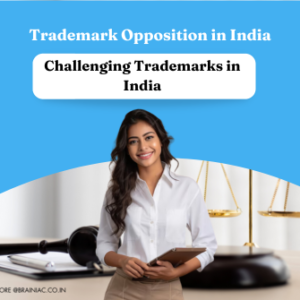One of the biggest mistakes entrepreneurs make is that they first register the company or product, do marketing, and later try to file for the trademark.
This approach is entirely wrong, and it can have severe consequences for your business. Here’s why.
When you start a new business, it is crucial to conduct a comprehensive trademark search to ensure that your desired name or logo is available for use. If there is already a trademark registered under the same name or logo, you risk infringing someone else’s trademark rights. This can lead to legal disputes, loss of revenue, and damage to your brand’s reputation.
Moreover, if you have already invested significant resources in marketing and branding your company or product, you will have to start over from scratch if you discover a conflicting mark. This will not only waste all the money you have poured into marketing and branding but also delay your business’s growth and success.
On the other hand, if you register your trademark before launching your business, you can avoid such costly mistakes. Trademark registration gives you exclusive rights to use your mark in connection with your goods and services, preventing others from using a similar mark. It also helps you build a strong brand identity and protects your reputation.
When you register your trademark, you can use the ® symbol, which signals to others that your mark is a registered trademark and protected under the law. This can deter potential infringers from using your mark and allow you to take legal action if necessary.
In conclusion, trademark registration should be a top priority for any entrepreneur starting a new business. It is essential to conduct a comprehensive trademark search and register your trademark before launching your product or service. This will help you avoid costly mistakes, protect your brand’s reputation, and ensure the long-term success of your business.
Registering a trademark (brand name, company name, logo, image or device) gains you exclusive legal rights to your trademark and accords higher protection to your identity in the market. Therefore, filing and registering your trademark are primary steps towards establishing your brand.
Registering a trademark helps your prospective customers and clients differentiate your product or service from others within the market. It also acts as a deterrent to other agencies that may pass off their product like yours, trying to benefit from your popularity.
The entire process of filing and registration of your trademark in India may take anywhere between two months to two years, depending on the complications and procedures involved.After the filing of the application, if there is some objection raised by the trademark office you need to reply within a specific time. Once the trademark office is satisfied with the response, it will publish the application in the trademark journal. Once it is published, the application will be open for opposition by any third party. If opposed, the trademark registrar asks every party to present their case and permits or denies registration accordingly.
Brainiac IP Solutions has a strong team of experienced trademark agents and attorneys who is well-equipped and knowledgeable of the nuances of the IP trademark registration processes. They are adept at handling the trademark filing in Pune process in India as well as in foreign jurisdictions. We can specifically help you reduce trademark and IP filing expenses in the US. Contact us today.











